Canadians who winter in the United States (“Snowbirds”) are increasingly looking to sell their seasonal properties south of the Border.
This has been widely reported—most recently, in the Wall Street Journal—and rightly so: Canadians are the largest cohort of foreign property owners.
Since their interest is concentrated in only a handful of geographies, the selling pressure will affect these places disproportionately.
The risk of widespread selling is more credible for Canadians than for other nationalities that own homes in the US: most of the properties held by Canadians are vacation homes, rather than primary residences.
But while this trend has been reported elsewhere using anecdotes, none—as far as we can tell—have used an empirical approach to identify the specific markets most at risk.
In our analysis here, we estimate the geolocations of Canadian Snowbird ownership of US properties using Census Bureau microdata. These household-level records allow us to identify a cohort that likely closely proxies Snowbirds: those over 65 years old, born in Canada, living in the US on the Census date, but without American permanent residency or citizenship.
Using this proxy yields the following map—areas in deeper red are those where more Snowbirds were sampled on the Census date.
Though Phoenix, AZ, takes the top spot, Florida is by far the most exposed state. Of all homes owned by Canadian Snowbirds in the US, our calculations suggest 27% are in Florida, followed by 11% in each of California and Arizona.
This is because so many of Florida’s coastal cities are popular with Canadians—from Sarasota to Naples to Miami.
It’s hard to image this will impact Florida’s real estate market over the long run. After all, as we pointed out in our recent analysis of population shifts (link below), Florida is gaining population rapidly. Canadians have accounted for only a small fraction of this.
Still, for stakeholders in Florida’s property markets, the potential influx of homes for sale and newly-vacated rental units because of departing Snowbirds is one more short term cloud on the horizon for the Sunshine State.
You may also be interested in:


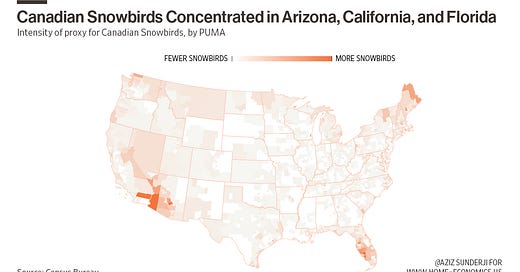


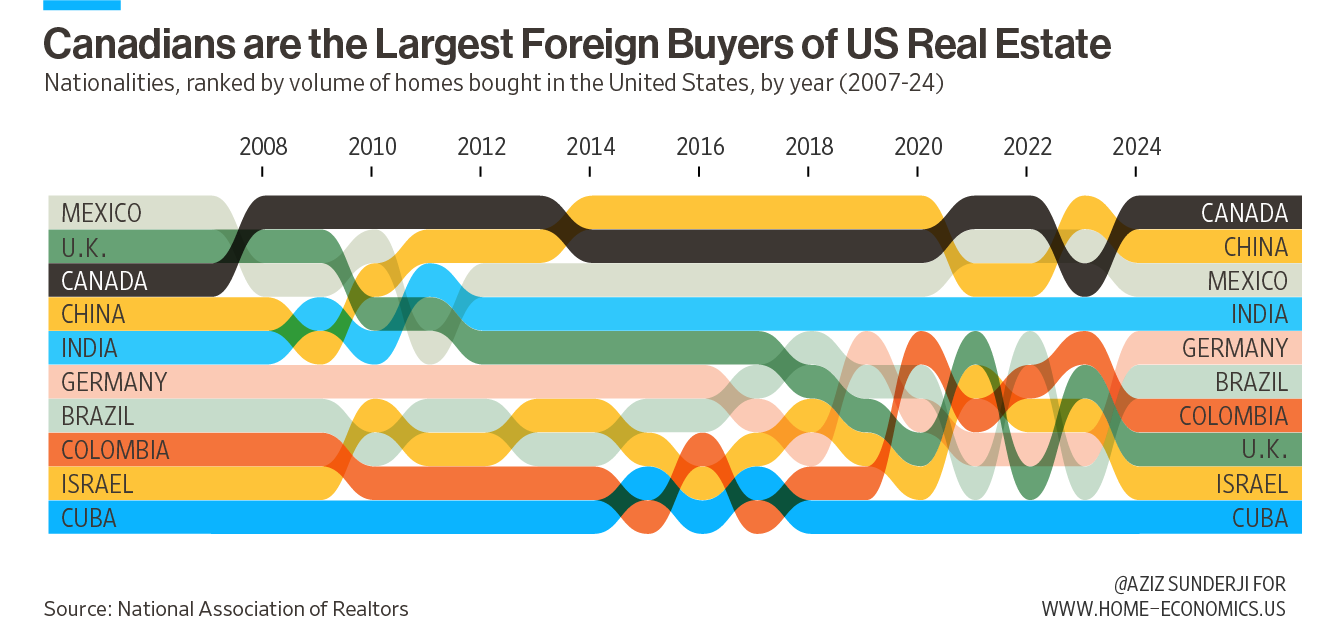
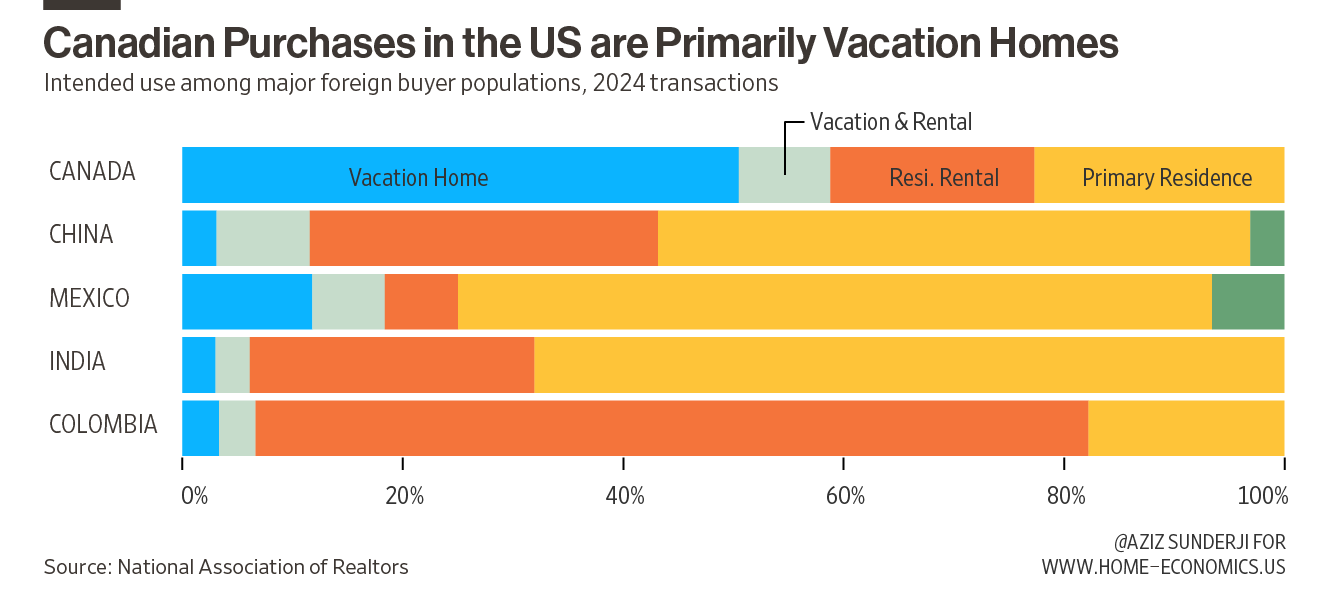

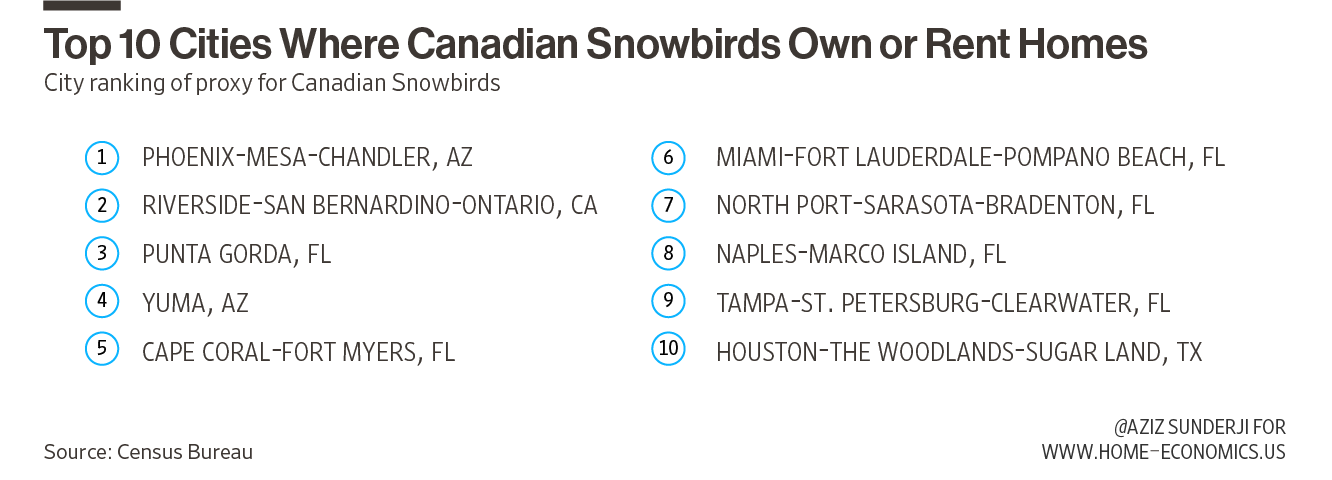
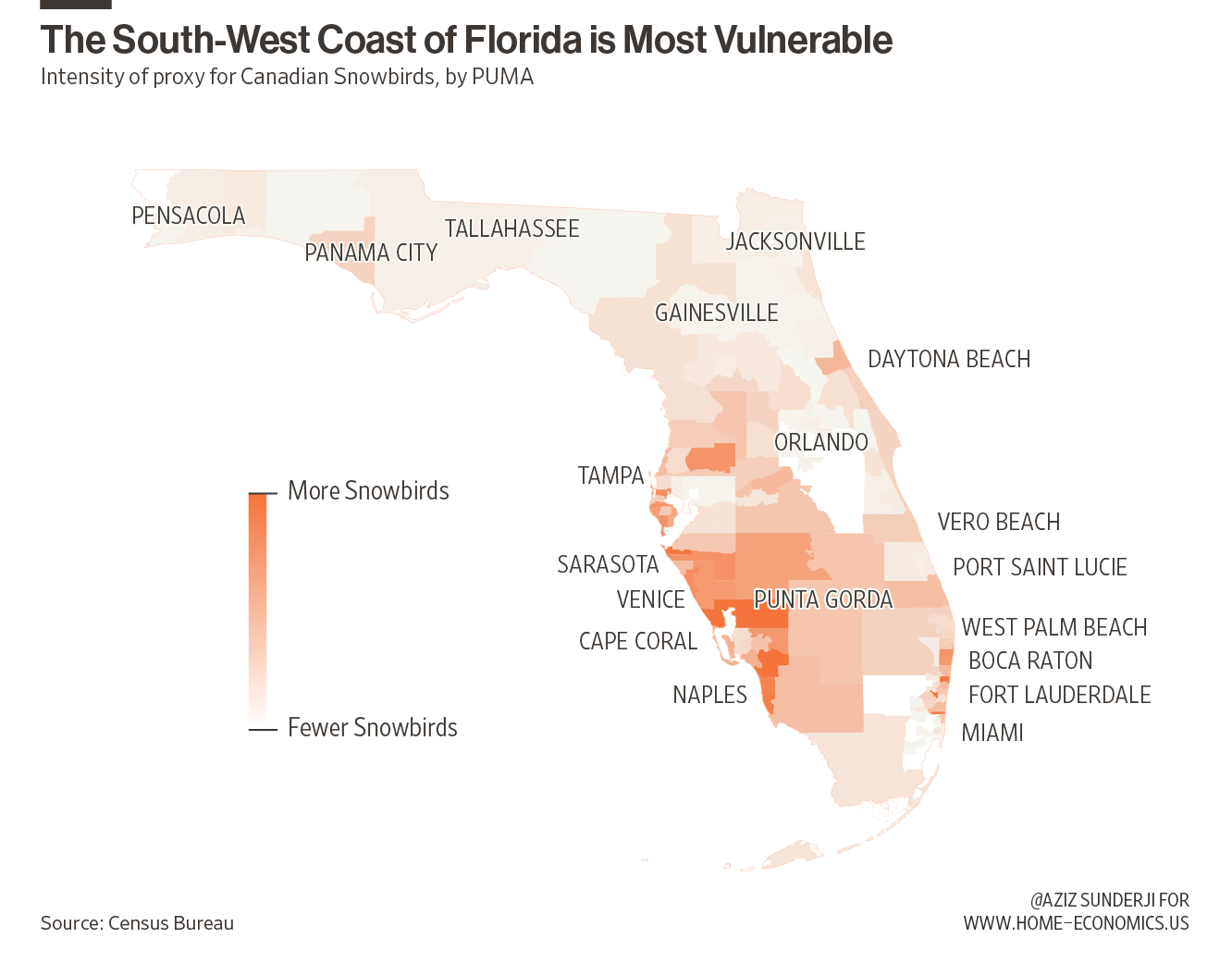
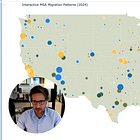
Great piece. I loved your deep dive into the stats. Thank you. I can tell you that South Florida condo developers and real estate professionals are worried. Canadians accounted for eight percent of the $3.1 billion in foreign investment in residential real estate in South Florida (Miami-Dade, Broward and Palm Beach) in 2024, according to a Miami Association of Realtors - Florida Realtors report published in February. Canadians prefer condos (69 percent) and spend an average of about $600,000 per property, according to the study. The South Florida condo market is struggling due to skyrocketing maintenance costs, special assessments and insurance rates following legislation related to the Surfside condo collapse. If our market - which currently has about 12 months of supply - loses the Canadians, South Florida will feel it bigly. Ironically, the largest foreign buyer contingent of residential real estate in Palm Beach County - where Mar-O-Lago is located - is Canadians, accounting for 25 percent, according to the study.
Analysis is informative. Fla has always been main destination for the 6 🇨🇦eastern provinces. The 4 western to AZ. Much of recent selling though seems to be driven by